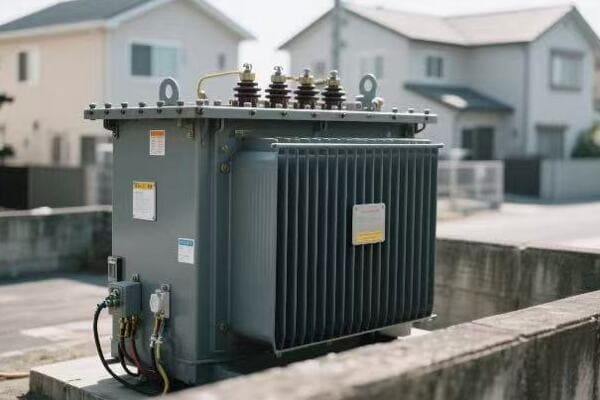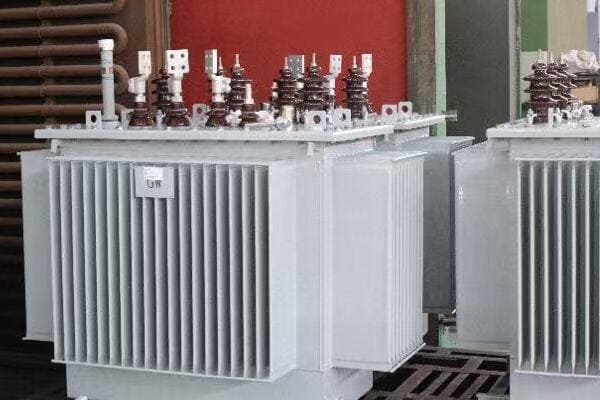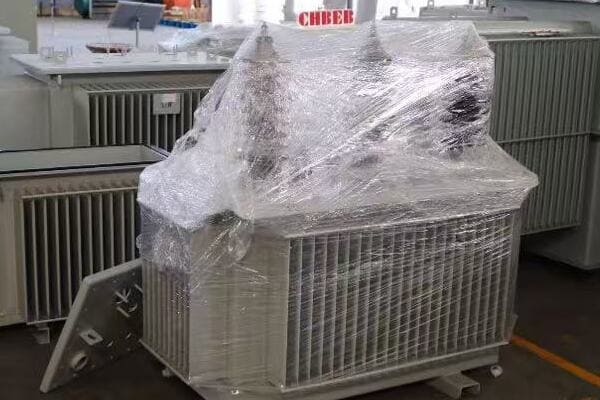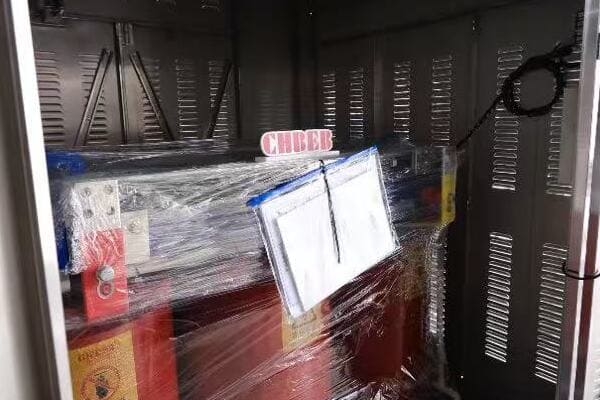Residential Transformer Installation: Step-by-Step Guide for Homeowners?
Are you feeling overwhelmed by the prospect of installing a residential transformer? You’re not alone. Many homeowners find this process daunting, but with the right guidance, it can be straightforward and safe. What if you had a clear, step-by-step guide to help you navigate this complex task?
Installing a residential transformer involves site preparation, safety checks, correct mounting, and electrical connections. This step-by-step guide walks homeowners and technicians through each phase to ensure a safe and code-compliant setup. Learn how to install your transformer properly and avoid common mistakes.

In this comprehensive guide, I’ll walk you through the entire process of installing a residential transformer. Whether you’re a DIY enthusiast or working with a professional, this article will provide you with the knowledge to ensure your transformer is installed safely and efficiently.
What Is a Residential Transformer?
Have you ever wondered how the high-voltage electricity from power lines becomes safe to use in your home? This is where residential transformers come in. But what exactly are these devices, and why are they so crucial for your home’s electrical system?
A residential transformer is an electrical device that reduces the high voltage from utility power lines to a lower, safer voltage suitable for household use. Typically ranging from 25kVA to 75kVA, these transformers are essential for single-family homes, residential complexes, and rural properties. They ensure a stable and safe power supply for all your home electrical needs.
Understanding Residential Transformers
Let’s break down the key aspects of residential transformers:
- Purpose and Function
- Common Capacities
- Types of Residential Transformers
- Applications in Different Settings
- Safety Features
Purpose and Function
Residential transformers serve a critical role:
- Step down high voltage (typically 7.2kV to 14.4kV) to usable household voltage (120/240V)
- Provide a safe interface between utility power and home electrical systems
- Ensure stable power supply for all household electrical needs
I once visited a newly developed suburban area where the installation of residential transformers was underway. It was fascinating to see how these compact devices were the key to powering entire neighborhoods.
Common Capacities
Residential transformers come in various sizes:
- Typical range: 25kVA to 75kVA
- Smaller homes often use 25kVA or 37.5kVA units
- Larger homes or small multi-unit buildings might require 50kVA or 75kVA
During a recent project, I helped a homeowner select a 37.5kVA transformer for their large single-family home. This size provided ample capacity for their current needs and future expansions.
Types of Residential Transformers
There are several types commonly used in residential settings:
- Pole-mounted transformers: Often seen in suburban or rural areas
- Pad-mounted transformers: Common in newer developments with underground wiring
- Dry-type transformers: Used in indoor installations, often in larger residential buildings
Here’s a quick comparison of these types:
| Type | Typical Location | Advantages | Considerations |
|---|---|---|---|
| Pole-mounted | On utility poles | Easy maintenance, less ground space | More exposed to elements |
| Pad-mounted | Ground level | Aesthetically pleasing, protected | Requires dedicated space |
| Dry-type | Indoor, basements | Safe for indoor use, no oil leaks | May require special ventilation |
Applications in Different Settings
Residential transformers are used in various settings:
- Single-family homes in urban and suburban areas
- Rural properties and farms
- Small apartment buildings or condominiums
- Gated communities with shared electrical infrastructure
Safety Features
Modern residential transformers include various safety features:
- Overload protection
- Short-circuit protection
- Thermal monitoring
- Weatherproof enclosures for outdoor units
Key points to remember about residential transformers:
- They are essential for converting high-voltage power to safe household levels
- Capacities typically range from 25kVA to 75kVA for residential use
- Different types are suitable for various installation scenarios
- They serve diverse residential settings, from single homes to small complexes
- Safety features are integral to their design and function
In my experience, understanding the basics of residential transformers is crucial for homeowners, especially when planning new constructions or major electrical upgrades. I’ve seen cases where this knowledge helped residents make informed decisions about their power needs and installation options.
As we move forward to discuss the pre-installation checklist, keep in mind the importance of selecting the right type and capacity of transformer for your specific residential needs. Proper planning at this stage sets the foundation for a successful and safe installation process.
Pre-Installation Checklist: Safety, Site, and Local Codes?
Are you prepared for the crucial steps before installing your residential transformer? Proper preparation is key to a safe and compliant installation. But what specific checks and preparations do you need to make before the actual installation begins?
A thorough pre-installation checklist for residential transformers includes safety assessments, site evaluations, and compliance with local codes. Key elements involve checking ground conditions, planning cable routes, obtaining utility permissions, and ensuring adherence to NEC or IEC standards. This preparation is crucial for a safe, efficient, and code-compliant transformer installation.

Essential Pre-Installation Steps
Let’s break down the key components of your pre-installation checklist:
- Safety Assessments
- Site Evaluation
- Local Code Compliance
- Utility Coordination
- Equipment and Tool Preparation
Safety Assessments
Safety is paramount in transformer installation:
- Conduct a risk assessment of the installation area
- Ensure proper personal protective equipment (PPE) is available
- Plan for emergency procedures and have first aid kits on hand
I recall a project where we discovered underground gas lines during the site assessment. This early discovery allowed us to adjust our installation plan, avoiding a potentially dangerous situation.
Site Evaluation
Thoroughly assess the installation site:
- Check ground conditions for stability and drainage
- Plan cable routes and trenching requirements
- Evaluate accessibility for installation equipment
- Consider environmental factors (flood risks, extreme temperatures)
During a recent installation, we found that the planned site was prone to seasonal flooding. We had to relocate the transformer to higher ground, highlighting the importance of thorough site evaluation.
Local Code Compliance
Adherence to local codes is crucial:
- Review National Electrical Code (NEC) requirements for residential installations
- Check local building codes and zoning regulations
- Ensure compliance with any homeowners’ association rules
Here’s a quick reference for common code considerations:
| Aspect | Typical Requirement | Why It’s Important |
|---|---|---|
| Clearance | Minimum 3 feet on all sides | Safety and maintenance access |
| Grounding | Proper grounding system | Electrical safety and performance |
| Weatherproofing | Appropriate for local climate | Longevity and reliability |
| Noise levels | Below local ordinance limits | Neighborhood compliance |
Utility Coordination
Coordinate with your local utility company:
- Obtain necessary permits and approvals
- Schedule utility disconnections or connections
- Verify transformer specifications meet utility requirements
I once worked on a project where skipping utility coordination led to delays and additional costs. Always ensure you have all necessary approvals before proceeding with installation.
Equipment and Tool Preparation
Prepare all necessary equipment and tools:
- Verify transformer specifications match your order
- Gather all required installation tools and equipment
- Arrange for any specialized machinery (e.g., crane for pad-mounted units)
Key points for your pre-installation checklist:
- Prioritize safety with thorough risk assessments and proper PPE
- Conduct a comprehensive site evaluation, including environmental factors
- Ensure full compliance with local electrical and building codes
- Coordinate closely with utility companies for approvals and scheduling
- Prepare all necessary equipment and tools in advance
In my experience, a well-executed pre-installation phase can prevent numerous issues during and after installation. I’ve seen projects where overlooking seemingly minor details in this phase led to significant complications later.
For instance, in a recent residential project, our thorough pre-installation checklist revealed that the planned transformer location didn’t meet the minimum distance requirements from the property line. Identifying this early allowed us to adjust the site plan without delaying the overall project timeline.
As we move forward to discuss the step-by-step installation process, remember that this pre-installation phase sets the stage for a smooth and safe transformer installation. Taking the time to carefully go through each item on your checklist can save you time, money, and potential safety hazards in the long run.
Step-by-Step Residential Transformer Installation?
Are you ready to tackle the installation of your residential transformer? This process can seem daunting, but with a clear, step-by-step approach, you can ensure a safe and efficient installation. What are the key steps you need to follow, and what should you pay special attention to during each phase?
Installing a residential transformer involves several critical steps: site preparation, transformer mounting, grounding, high and low voltage connections, and pre-energization checks. Each step requires careful attention to detail and adherence to safety protocols. Following this guide ensures a proper installation that meets all safety and performance standards.

Detailed Installation Process
Let’s walk through the installation process step by step:
- Site Preparation
- Transformer Mounting
- Grounding System Installation
- High Voltage Connections
- Low Voltage Connections
- Final Checks and Energization
Site Preparation
Proper site preparation is crucial:
- Clear the area of any obstacles or debris
- Ensure the foundation is level and stable
- Install necessary conduits for cable routing
- Set up safety barriers and signage
I once worked on a project where inadequate site preparation led to stability issues with the pad-mounted transformer. We had to reinforce the foundation, causing delays and additional costs.
Transformer Mounting
Carefully mount the transformer:
- For pad-mounted units, secure the transformer to the concrete pad
- For pole-mounted units, ensure proper bracket installation and transformer attachment
- Verify the transformer is level and stable
During a recent installation, we used a crane to place a pad-mounted transformer. Precise coordination and careful handling were essential to avoid damage and ensure proper placement.
Grounding System Installation
Proper grounding is critical for safety:
- Install ground rods according to local codes
- Connect the transformer’s ground terminals to the grounding system
- Verify ground resistance meets required specifications
Here’s a quick reference for grounding requirements:
| Component | Typical Requirement | Purpose |
|---|---|---|
| Ground Rod | 8 ft long, copper-clad | Primary earth connection |
| Ground Wire | Copper, sized per NEC | Connects transformer to ground rod |
| Resistance | < 25 ohms typically | Ensures effective grounding |
High Voltage Connections
Connect the high voltage side carefully:
- Ensure power is off and locked out
- Make connections according to manufacturer specifications
- Use proper insulation and termination methods
- Double-check all connections for tightness and proper insulation
Low Voltage Connections
Connect the low voltage side:
- Follow manufacturer guidelines for connection order
- Ensure proper sizing of conductors
- Use appropriate lugs and termination methods
- Verify all connections are secure and properly insulated
Final Checks and Energization
Before energizing:
- Perform a thorough visual inspection of all connections
- Conduct insulation resistance tests
- Verify transformer settings (e.g., tap settings if applicable)
- Coordinate with utility for final connection and energization
Key points to remember during installation:
- Always prioritize safety throughout the installation process
- Follow manufacturer instructions and local codes meticulously
- Use proper tools and equipment for each step
- Double-check all connections and grounding before energization
- Document each step of the installation process
In my experience, attention to detail during each step of the installation is crucial. I’ve seen cases where skipping seemingly minor steps led to significant issues after energization.
For example, during a recent residential transformer installation, we discovered a minor discrepancy in the low voltage connections during our final checks. Catching and correcting this before energization prevented potential damage and ensured the safe operation of the transformer.
As we move on to discuss common installation mistakes, keep in mind that following these steps carefully can help you avoid many of these pitfalls. A methodical approach to installation not only ensures safety but also the long-term reliability of your residential transformer.
Common Installation Mistakes and How to Avoid Them?
Are you aware of the potential pitfalls that can occur during residential transformer installation? Even experienced professionals can make mistakes, but knowing what to watch out for can save you time, money, and ensure the safety of your installation. What are the most common errors, and how can you prevent them?
Common mistakes in residential transformer installation include incorrect voltage connections, inadequate clearance, improper grounding, and neglecting local codes. To avoid these, double-check all connections, ensure sufficient space around the transformer, follow grounding specifications meticulously, and stay updated on local regulations. Proper planning, attention to detail, and adherence to safety protocols are key to a successful installation.

Key Mistakes to Avoid
Let’s explore the most frequent installation errors and their solutions:
- Incorrect Voltage Connections
- Inadequate Clearance and Accessibility
- Improper Grounding
- Neglecting Local Codes and Standards
- Poor Documentation and Labeling
Incorrect Voltage Connections
A critical error with potentially dangerous consequences:
- Mistake: Mixing up high and low voltage connections
- Solution: Double-check all connections against the transformer diagram
- Prevention: Use color-coding and clear labeling of cables
I once witnessed a near-miss where high and low voltage connections were almost reversed. Our final check caught this error, highlighting the importance of meticulous connection verification.
Inadequate Clearance and Accessibility
Proper spacing is crucial for safety and maintenance:
- Mistake: Installing the transformer too close to walls or other equipment
- Solution: Adhere to minimum clearance requirements specified by codes and manufacturer
- Prevention: Plan the installation space carefully, considering future maintenance needs
During a recent project, we had to relocate a transformer due to insufficient clearance. This costly mistake could have been avoided with better initial planning.
Improper Grounding
Grounding is essential for safety and performance:
- Mistake: Inadequate or incorrect grounding connections
- Solution: Follow grounding specifications precisely
- Prevention: Use a checklist for grounding procedures and verify with testing
Here’s a quick guide to proper grounding:
| Aspect | Requirement | Common Mistake |
|---|---|---|
| Ground Rod | Proper depth and material | Using undersized or improper material |
| Connections | Secure and corrosion-resistant | Loose or exposed connections |
| Testing | Verify ground resistance | Skipping resistance testing |
Neglecting Local Codes and Standards
Compliance is non-negotiable:
- Mistake: Overlooking or misinterpreting local electrical codes
- Solution: Stay updated on local regulations and consult with authorities when in doubt
- Prevention: Include a code compliance check in your installation process
I recall a project where overlooking a recent change in local codes led to a failed inspection. Always ensure you’re working with the most current regulations.
Poor Documentation and Labeling
Proper records are crucial for future reference:
- Mistake: Inadequate or missing documentation of the installation
- Solution: Maintain detailed records of the installation process, including photographs
- Prevention: Create a standardized documentation process for all installations
Key strategies to avoid common mistakes:
- Develop and use comprehensive checklists for each installation phase
- Implement a peer review system for critical steps like connections and grounding
- Invest in ongoing training to stay updated on best practices and code changes
- Use quality tools and equipment designed for transformer installation
- Foster a culture of safety and attention to detail among your team
In my experience, most installation mistakes stem from rushing or assuming rather than verifying. I’ve seen how taking the time to double-check each step can prevent costly errors and potential safety hazards.
For instance, on a recent installation, we caught a grounding issue during our final checks. The ground resistance was slightly higher than specified. By identifying and correcting this before energization, we ensured the long-term safety and reliability of the transformer.
As we move on to discuss maintenance tips for residential transformers, remember that a properly installed transformer is the foundation for effective long-term maintenance. By avoiding these common mistakes, you’re setting the stage for years of reliable operation.
Maintenance Tips for Residential Transformers?
Are you wondering how to keep your residential transformer in top condition? Proper maintenance is crucial for ensuring the longevity and efficiency of your transformer. But what specific maintenance tasks should you be performing, and how often?
Maintaining a residential transformer involves regular inspections, cleaning, and testing. Key maintenance tasks include annual visual inspections, checking for oil leaks in oil-filled units, tightening electrical connections, and conducting periodic insulation resistance tests. Proper maintenance ensures safety, extends the transformer’s lifespan, and maintains its efficiency.

Essential Maintenance Practices
Let’s explore the key aspects of residential transformer maintenance:
- Regular Visual Inspections
- Cleaning and Environmental Protection
- Electrical Connection Checks
- Insulation Testing
- Oil Maintenance (for oil-filled transformers)
Regular Visual Inspections
Conduct visual checks regularly:
- Look for signs of rust, damage, or tampering
- Check for oil leaks in oil-filled units
- Inspect the surrounding area for vegetation overgrowth or debris
I once discovered a small oil leak during a routine inspection. Catching it early prevented a potentially hazardous situation and saved the homeowner from a costly repair.
Cleaning and Environmental Protection
Keep the transformer and its surroundings clean:
- Remove dust and debris from ventilation openings
- Clear away vegetation that might obstruct airflow
- Ensure proper drainage around pad-mounted units
During a maintenance visit to a coastal property, I noticed salt buildup on a transformer. We implemented a more frequent cleaning schedule to prevent corrosion in the harsh marine environment.
Electrical Connection Checks
Regularly check and maintain electrical connections:
- Tighten all accessible connections annually
- Look for signs of overheating or corrosion at connection points
- Verify that all labels and warnings are legible and in place
Here’s a quick guide for connection maintenance:
| Component | Check For | Frequency |
|---|---|---|
| Terminal connections | Tightness, corrosion | Annually |
| Bushing insulators | Cracks, contamination | Bi-annually |
| Grounding connections | Integrity, corrosion | Annually |
Insulation Testing
Perform periodic insulation resistance tests:
- Use a megohmmeter to test insulation resistance
- Compare results with baseline readings and manufacturer specifications
- Schedule professional testing if significant changes are observed
I recall a case where regular insulation testing revealed a gradual decline in resistance. This early detection allowed for timely intervention, preventing a potential failure.
Oil Maintenance (for oil-filled transformers)
For oil-filled units, oil maintenance is crucial:
- Check oil levels regularly
- Test oil quality annually or as recommended by the manufacturer
- Schedule professional oil filtration or replacement when necessary
Key maintenance tips to remember:
- Develop a regular maintenance schedule and stick to it
- Keep detailed records of all inspections and maintenance activities
- Address minor issues promptly to prevent them from becoming major problems
- Ensure proper safety measures when performing any maintenance tasks
- Consider professional maintenance services for complex tasks or testing
In my experience, consistent maintenance is the key to transformer longevity. I’ve seen transformers last well beyond their expected lifespan due to diligent maintenance, while others failed prematurely due to neglect.
For example, a client of mine has a 30-year-old transformer that’s still functioning efficiently, thanks to a rigorous maintenance routine. We’ve been performing regular checks and addressing minor issues promptly, which has significantly extended its operational life.
As we move on to discuss the best brands for residential transformers, keep in mind that even the highest quality transformer requires proper maintenance to perform optimally. Regular care not only ensures reliability but can also help you get the most value out of your investment.
Best Brands for Residential Transformers (with Real Cases)?
Are you wondering which brands offer the most reliable and efficient residential transformers? With so many options on the market, choosing the right brand can be overwhelming. But which manufacturers have proven themselves in real-world applications, and what makes their products stand out?
Top brands for residential transformers include Schneider Electric, ABB, CHBEB, and TBEA. Schneider Electric offers efficient dry-type transformers ideal for urban settings. ABB excels in durable pole-mounted units for suburban areas. CHBEB provides cost-effective solutions popular in developing regions, while TBEA offers robust options for diverse environmental conditions. Each brand has unique strengths suited to different residential needs and settings.
Analyzing Leading Residential Transformer Brands
Let’s explore some of the best brands and their real-world applications:
- Schneider Electric
- ABB
- CHBEB
- TBEA
- General Electric (GE)
Schneider Electric
Known for energy efficiency and reliability:
- Model Example: Schneider Electric 25kVA Dry Type Transformer
- Key Features: Low noise, high efficiency, suitable for indoor installations
- Real Case: Successfully used in a high-end condominium project in Singapore, providing quiet operation crucial for residential comfort
I recently specified Schneider Electric transformers for a smart home development. Their compatibility with home automation systems and energy monitoring capabilities were key factors in the decision.
ABB
Excels in durability and outdoor applications:
- Model Example: ABB Pole-Mounted 50kVA Transformer
- Key Features: Weather-resistant, long service life, suitable for harsh environments
- Real Case: Deployed in a rural electrification project in Canada, withstanding extreme weather conditions
During a project in a coastal area prone to salt spray, ABB’s corrosion-resistant transformers proved invaluable, maintaining performance despite the challenging environment.
CHBEB
Offers cost-effective solutions with growing popularity:
- Model Example: CHBEB Indoor Dry-Type 30kVA Transformer
- Key Features: Compact design, good price-to-performance ratio
- Real Case: Widely used in mid-income housing projects in Vietnam, balancing quality and affordability
Here’s a comparison of these top brands:
| Brand | Key Strength | Typical Application | Notable Feature |
|---|---|---|---|
| Schneider Electric | Energy Efficiency | Urban Apartments | Low Noise Operation |
| ABB | Durability | Suburban/Rural Areas | Weather Resistance |
| CHBEB | Cost-Effectiveness | Developing Regions | Compact Design |
| TBEA | Versatility | Diverse Environments | Customization Options |
| GE | Reliability | Established Neighborhoods | Smart Grid Compatibility |
TBEA
Known for versatility and customization options:
- Model Example: TBEA 50kVA Oil-Immersed Transformer
- Key Features: Adaptable to various environmental conditions, good overload capacity
- Real Case: Successfully implemented in a large-scale residential development in Xinjiang, China, handling both extreme heat and cold
I worked on a project where TBEA’s ability to customize transformers for specific voltage requirements was crucial in meeting unique local grid standards.
General Electric (GE)
Renowned for reliability and innovation:
- Model Example: GE Prolec 75kVA Pad-Mounted Transformer
- Key Features: Smart grid ready, high short-circuit strength
- Real Case: Utilized in a smart neighborhood project in Florida, USA, integrating seamlessly with advanced grid management systems
Key factors to consider when choosing a residential transformer brand:
- Assess the specific environmental conditions of your installation site
- Consider long-term efficiency and potential energy savings
- Look for brands that offer good after-sales support and warranty
- Check for compliance with local standards and regulations
- Evaluate the brand’s track record in your specific application type
In my experience, the choice of brand can significantly impact the long-term performance and reliability of a residential power system. I’ve seen cases where opting for a reputable brand with slightly higher upfront costs led to significant savings in maintenance and energy efficiency over time.
For example, in a recent suburban development project, we chose GE transformers despite their higher initial cost. The decision paid off as these units demonstrated excellent reliability and lower energy losses, resulting in reduced electricity costs for homeowners over the years.
As we conclude this guide, remember that selecting the right brand is just as important as proper installation and maintenance. The best choice will depend on your specific needs, local conditions, and long-term goals for your residential power system.
Conclusion
Installing and maintaining a residential transformer is a complex but manageable task with the right knowledge and approach. From understanding the basics to choosing the right brand, each step is crucial for ensuring safe, efficient, and reliable power distribution in your home. Remember to prioritize safety, adhere to local codes, and maintain your transformer regularly for optimal performance and longevity.
Remember, at chbeb-ele, we’re not just sharing information – we’re empowering you to be part of the solution in creating a secure, clean, and efficient energy future. Let’s continue this journey together.
Recent Post
Quick Message
Request A free quote
We'd like to work with you
- +86 15558785111
- chbebgroup@chbebpower.com
- +86 15558785111
What We Do
CHINA BEI ER BIAN (CHBEB) GROUP, with 218 million in registered capital, originated from Beijing Beierbian Transformer Group. Headquartered in Beijing for R&D, it operates major production bases in Nanjing and Yueqing, producing high-quality products.
Latest Post
Latest Product
Contact Us
- +86 15558785111
- chbebgroup@chbebpower.com
- +86 15558785111
BeiJing
No 3,RongJing East Road,BeiJing Economic Technological Development Area,BeiJing,China
JiangSu
No 7️Xiangfeng Road,Jiangning,NanJing,JiangSu,China
WenZhou
No.211, Wei 16 Road, Industrial Zone, Yueqing, Wenzhou, Zhejiang, China.
XiangYang Industrial Zone ,YueQing,WenZhou,ZheJiang,China



